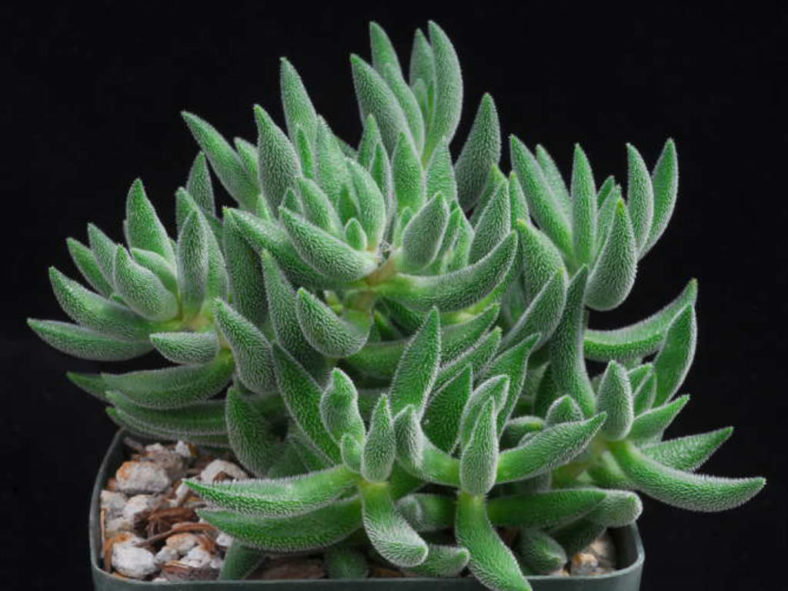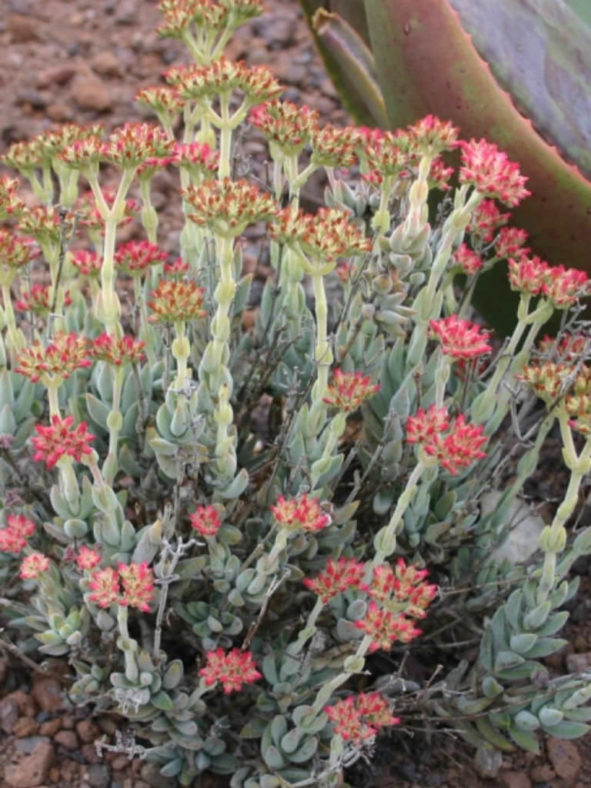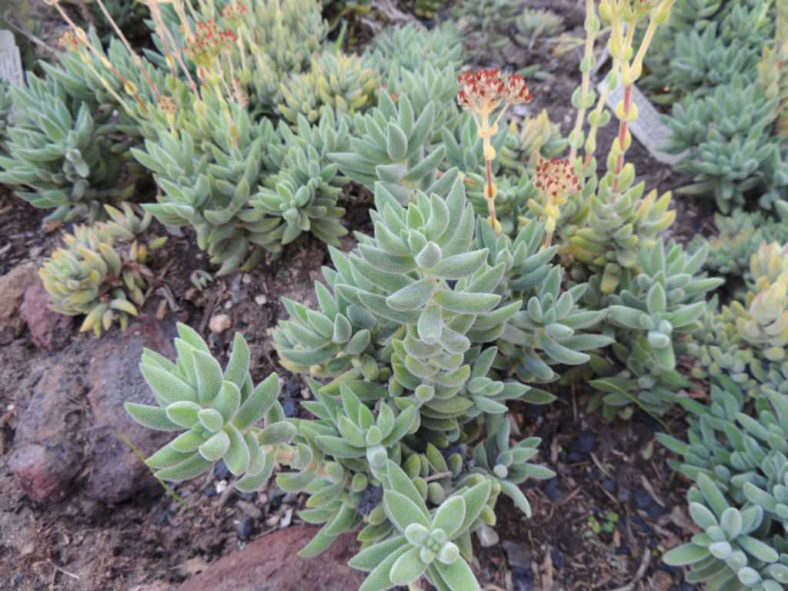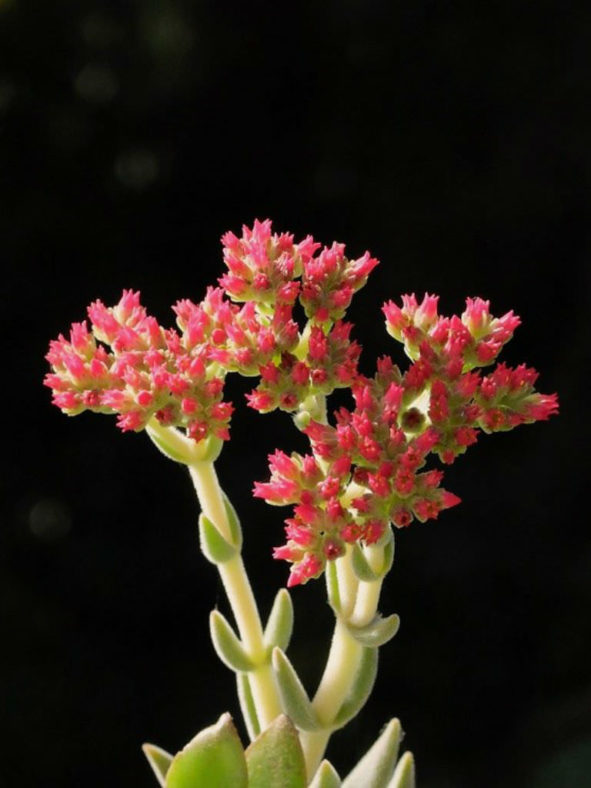Scientific Name
Crassula 'Surprise Party'
Scientific Classification
Family: Crassulaceae
Subfamily: Crassuloideae
Genus: Crassula
Origin
Crassula 'Surprise Party' is either an unusually colorful form of Crassula mesembryanthemoides or a hybrid in which this species dominates and is possibly crossed with Crassula perfoliata var. coccinea.
Description
Crassula 'Surprise Party' is a popular small succulent shrub with upright, branched stems and soft, green leaves covered in tiny hairs, which give them a silver shimmer. It can grow up to 20 inches (50 cm) tall. The leaves are spindle-shaped and can reach up to 1.6 inches (4 cm) long and 0.4 inches (1 cm) wide.
The flowers are bright red-violet, bell-shaped, and appear in clusters at the top of the stems, usually in fall.

Hardiness
USDA hardiness zone 9a to 11b: from 20 °F (−6.7 °C) to 50 °F (+10 °C).
How to Grow and Care
Crassulas are easy to grow but susceptible to mealy bugs and fungal diseases. As with all succulents, overwatering is sure to be fatal, so err on the side of being too dry rather than too wet. Never let your plant sit in water. If you water from beneath by allowing the plant to sit in a saucer, ensure you pour off any excess water after a few minutes.
These succulents are generally started by division, offsets, or leaf cuttings. Plants can be easily propagated from a single leaf. Sprout leaves by placing them into a potting mix for succulents, then cover the dish until they sprout.
Repot as needed, preferably during the warm season. To repot a succulent, ensure the soil is dry before repotting, then gently remove the pot. Knock away the old soil from the roots, removing any rotted or dead roots. Treat any cuts with a fungicide. Place the plant in its new pot and backfill it with potting soil, spreading the roots as you repot. Leave the plant dry for a week or so, then begin to water lightly to reduce the risk of root rot.
See more at How to Grow and Care for Crassula.
Links
- Back to genus Crassula
- Succupedia: Browse succulents by Scientific Name, Common Name, Genus, Family, USDA Hardiness Zone, Origin, or cacti by Genus
Photo Gallery
Click on a photo to see a larger version.


